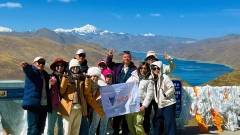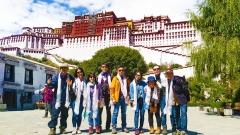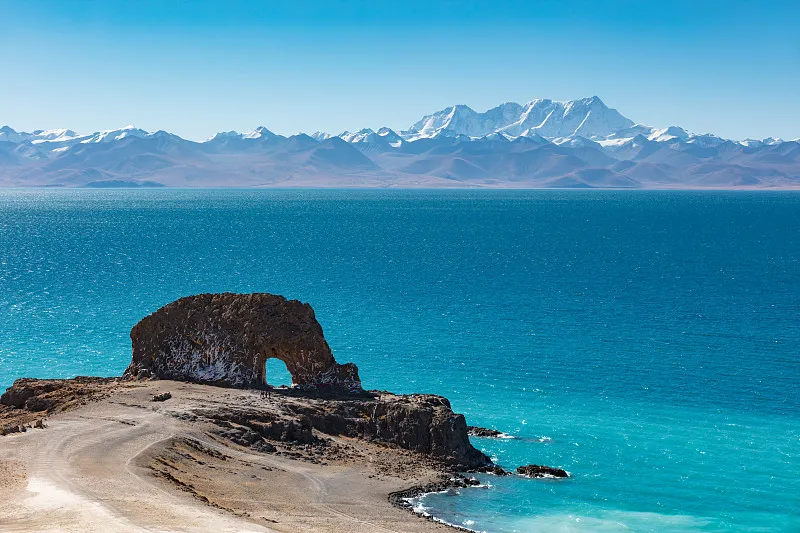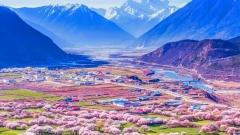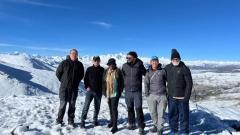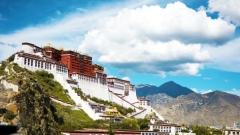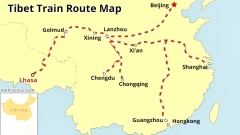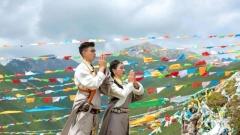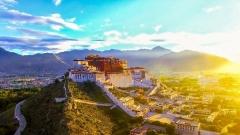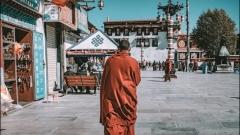Mount Everest, the world’s highest peak, straddles the border between Tibet (China) and Nepal. Both sides offer travelers a chance to stand before this awe-inspiring mountain, yet the experiences differ vastly in landscape, culture, accessibility, and comfort. Whether you dream of gazing at Everest from the comfort of a car or trekking through rugged Himalayan trails, understanding what each side offers can help you choose your ideal route. Let’s compare Everest Base Camp (EBC) Tibet and EBC Nepal in detail.
1. Accessibility: Which Side Is Easier to Reach?
Tibet Side (China):
Getting to Everest Base Camp in Tibet is surprisingly convenient. Most travelers fly to Lhasa, Tibet’s capital, and then drive via Shigatse and Tingri along the well-paved Friendship Highway. The entire journey from Lhasa to EBC is about 700 km and takes 2–3 days with scenic stops. You don’t need to trek for days—vehicles can take you almost to the base camp itself.
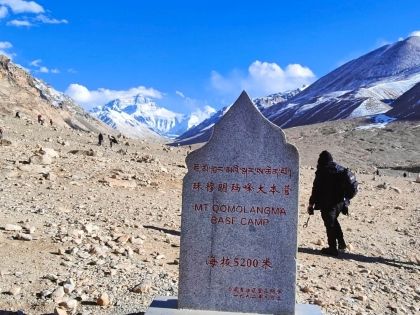
Mount Everest
Nepal Side:
In contrast, reaching EBC from Nepal requires a challenging trek. Most travelers fly from Kathmandu to Lukla Airport, known as one of the most thrilling airstrips in the world, and then embark on a 12–14 day round-trip trek to Everest Base Camp and back. The trek involves steep ascents, rocky paths, and altitudes above 5,000 meters. While physically demanding, it’s a rewarding adventure for those who love hiking.
✅ Verdict: If you prefer a comfortable and accessible journey, Tibet wins. If you’re after adventure and physical challenge, Nepal is your pick.
2. Scenery and Photography: What You’ll See
Tibet Side:
From the Tibetan side, you get a panoramic view of Mount Everest’s majestic north face—the full pyramid shape that photographers love. The road from Lhasa to EBC passes through dramatic landscapes: turquoise lakes like Yamdrok, high mountain passes, vast grasslands, and the world’s highest monasteries such as Rongbuk Monastery. The view from Rongbuk is especially iconic—on a clear day, the golden light of sunrise hits Everest’s summit directly.
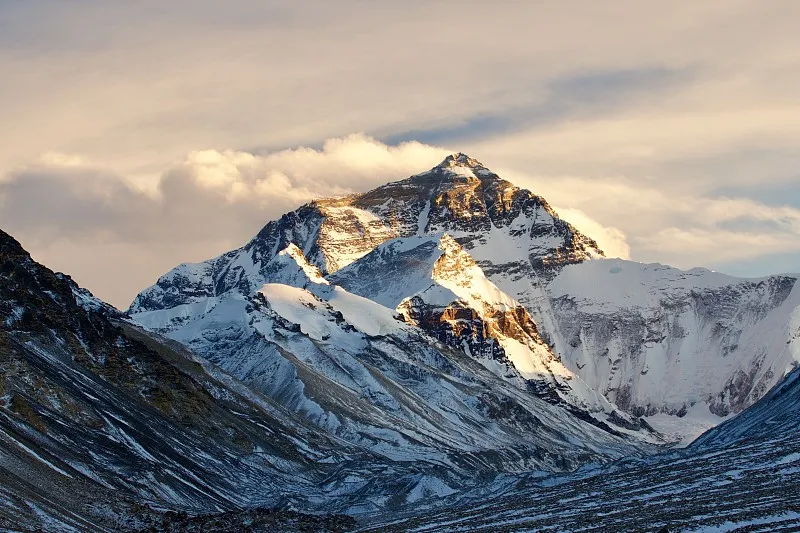
Mount Everest
Nepal Side:
The Nepalese trek offers intimate, close-up views of Everest and neighboring peaks like Lhotse, Nuptse, and Ama Dablam. The trail winds through Sherpa villages, lush forests, and Buddhist monasteries. However, from the Nepal side, you can’t see the entire Everest pyramid, as its south face is partly obscured by nearby ridges.
✅ Verdict: For photography and wide-angle mountain views, Tibet’s EBC is unbeatable. For immersive natural trekking scenery, Nepal shines.
3. Cultural Experience
Tibet Side:
The Tibetan side of Everest introduces travelers to Tibetan Buddhism and a strong sense of spiritual calm. Stops along the way include Gyantse Kumbum Stupa, Tashilhunpo Monastery, and Rongbuk Monastery, the world’s highest. The journey feels like a spiritual pilgrimage, blending mountain grandeur with sacred serenity.
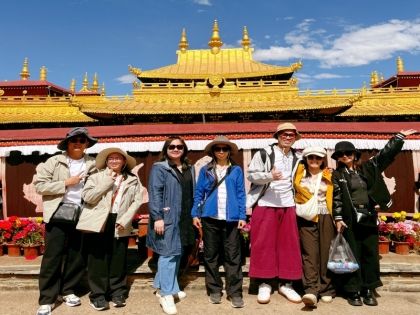
Tourists at Tashilhunpo Monastery
Nepal Side:
Nepal’s Everest region is home to the Sherpa people, whose culture revolves around hospitality and mountain life. Trekkers can stay in family-run teahouses, share stories around the fire, and witness traditional dances and Buddhist rituals. It’s a community-based travel experience that feels warm and personal.
✅ Verdict: For spiritual and historical depth, choose Tibet. For local interaction and trekking culture, Nepal wins.
4. Accommodation and Comfort
Tibet Side:
The Tibet route offers relatively comfortable lodging. You’ll find decent 3–4-star hotels in Lhasa and Shigatse, and simple guesthouses near EBC. Basic amenities are available even at high altitude, and you can reach EBC by vehicle, reducing physical strain.
Nepal Side:
On the trekking route, accommodation consists mostly of teahouses or mountain lodges—rustic but cozy. Hot water and heating are limited, especially at higher elevations. Trekkers must adapt to shared bathrooms, simple meals, and occasional power outages.
✅ Verdict: Tibet offers more comfort and convenience, while Nepal appeals to adventurous travelers seeking authentic, no-frills mountain life.
5. Altitude and Health Considerations
Tibet Side:
Everest Base Camp (Tibet) sits at 5,200 meters (17,060 ft), higher than Nepal’s 5,364 meters but reached much faster by road. Because the ascent from Lhasa is gradual, travelers can acclimatize along the way, reducing risk of altitude sickness. Oxygen supplies and emergency support are available.
Nepal Side:
Trekking to EBC in Nepal involves gradual acclimatization over several days, which naturally adjusts your body to the altitude. However, fatigue and exposure can still cause altitude symptoms. Evacuation by helicopter is available but costly.
✅ Verdict: Both routes have altitude risks, but Tibet allows easier access to oxygen and vehicle support.
6. Permits and Travel Requirements
Tibet Side:
Foreign travelers must join an organized tour with a registered Tibetan travel agency (like China Dragon Travel) to visit EBC. The agency handles Tibet Travel Permits, Alien Travel Permits, and Border Passes. Independent travel is not allowed, but this ensures a hassle-free, secure trip.
Nepal Side:
In Nepal, you can trek independently or with a guide, though hiring local porters is highly recommended. Permits include the Sagarmatha National Park Entry Permit and the TIMS card.
✅ Verdict: Nepal offers more flexibility, while Tibet provides better organization and convenience through licensed agencies.
7. Cost Comparison
Tibet:
A standard 8-day Lhasa–Everest Base Camp tour costs around $1,000–$1,300 USD, including transport, hotels, guide, permits, and entrance fees. Flights to Lhasa are additional.
Nepal:
The 14-day trek costs around $1,200–$1,800 USD, including guide, porter, lodging, and meals. Helicopter return options add significantly to the cost.
✅ Verdict: Both are similarly priced, but Tibet offers greater comfort and efficiency for the same budget.
8. Best Time to Visit
Tibet:
April to June and September to October are ideal—clear skies, mild weather, and the best mountain visibility. Winter (Nov–Feb) is peaceful and cheaper, though cold.
Nepal:
March–May and October–November are trekking seasons, with stable weather and excellent visibility. Monsoon season (June–Sept) makes trekking muddy and risky.
✅ Verdict: Both share similar peak seasons, but Tibet remains accessible even in winter.
Final Verdict: Which Side Is Better?
| Criteria | Tibet EBC | Nepal EBC |
|---|---|---|
| Accessibility | Easy (by road) | Requires trek |
| Views | Panoramic north face | Close south face |
| Comfort | More comfortable | Rustic teahouses |
| Cultural Depth | Tibetan Buddhism | Sherpa culture |
| Flexibility | Guided tours only | Independent trekking |
| Adventure | Relaxed road trip | High-altitude trekking |
Summary:
If you want a comfortable, scenic, and culturally rich journey with unbeatable mountain views, Everest Base Camp in Tibet is the better choice. If you crave adventure, trekking challenges, and local immersion, the Nepal side will fulfill your Himalayan dreams.
Whichever side you choose, standing before Mount Everest is an unforgettable moment—a reminder of nature’s immense power and humanity’s enduring spirit of exploration.



